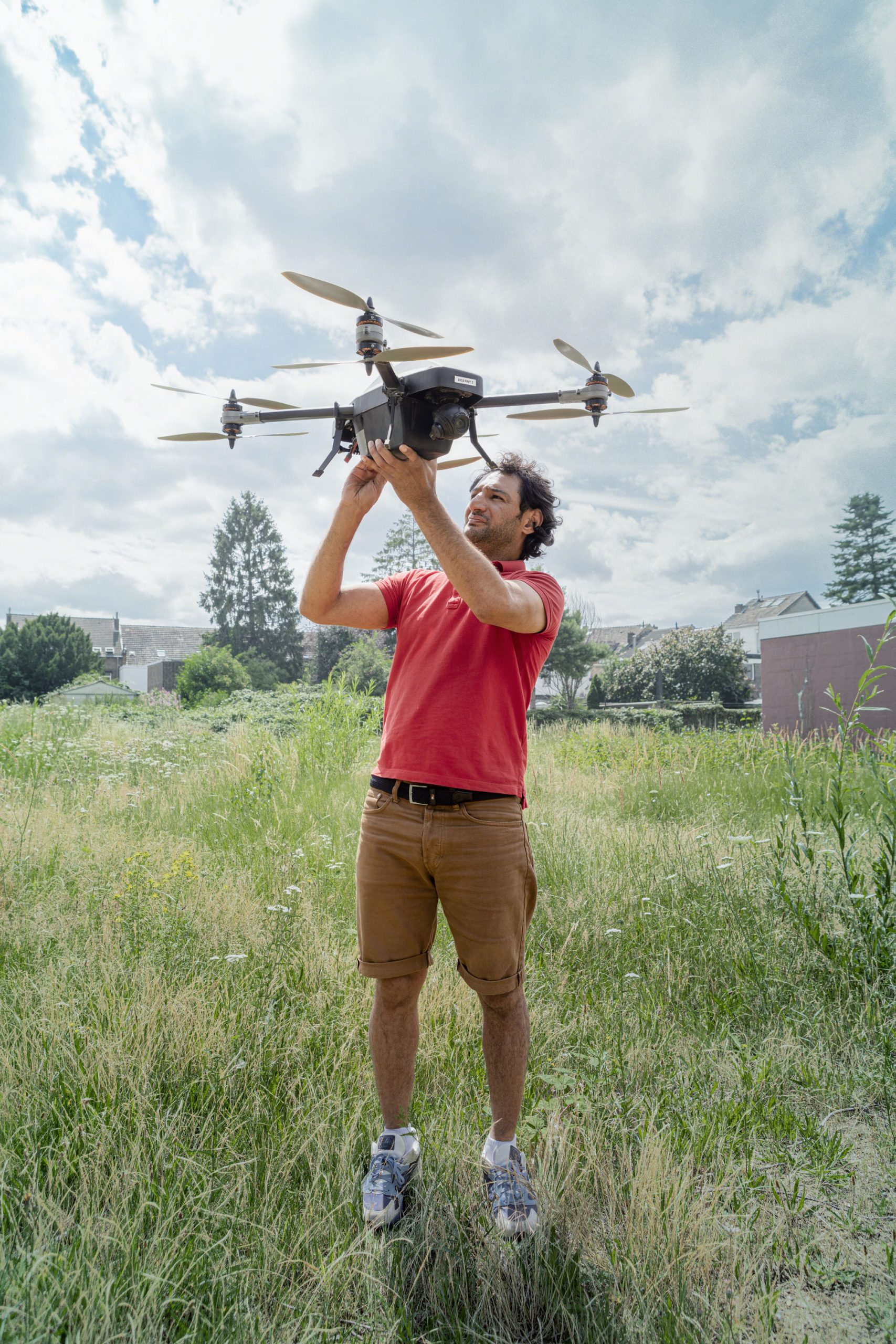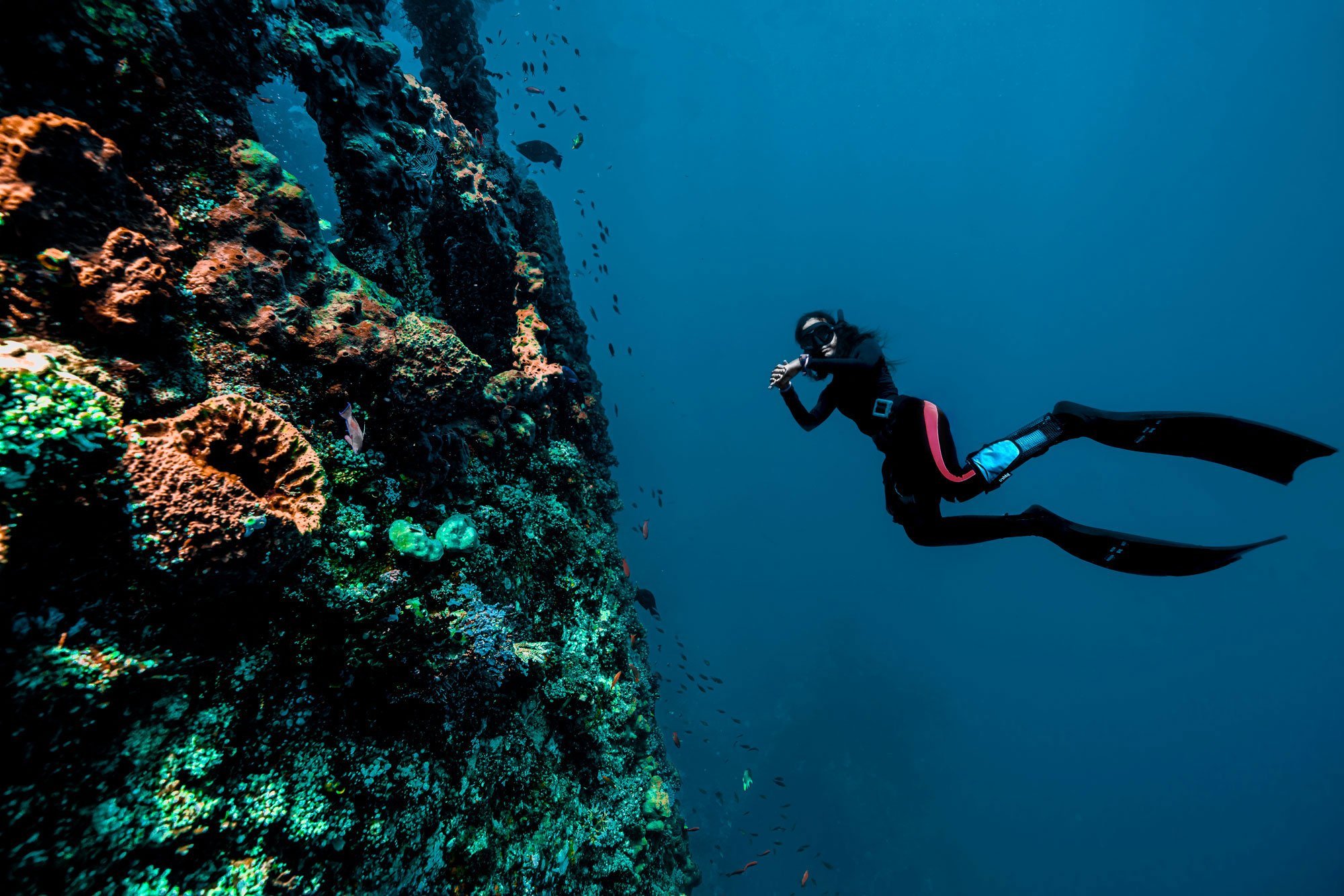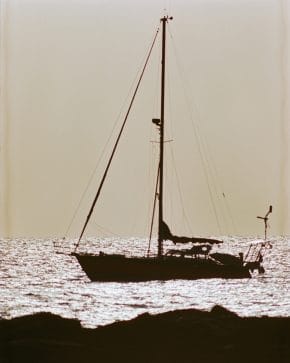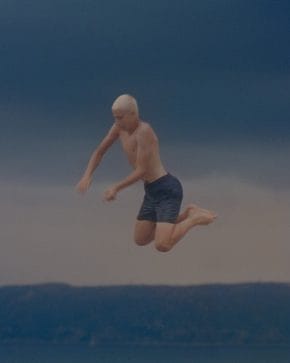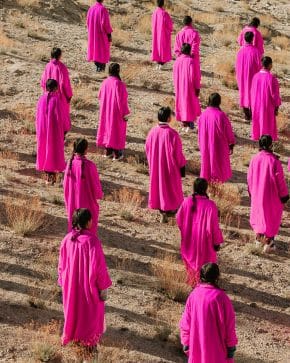Massoud Hassani grew up playing in fields strewn with landmines. Now he designs drones to clear them from the face of the earth − beginning with his native Afghanistan.
Takeaways
- Massoud Hassani has designed a series of drones that can map and clear landmines safely from the air.
- His original design was inspired by the wind-powered toys he made as a child in Afghanistan.
- The drones are ready for use in Afghanistan and Mali, with a further 50 companies and governments interested.
- Some 70% of landmine victims are civilians and of those, half are children.
- Massoud believes that the world can be cleared of landmines within five to ten years.
In an ordinary building in a very ordinary Dutch street, Massoud Hassani is making extraordinary things happen. The high-tech machines that he designs in his small studio will have a lasting impact thousands of kilometres away.
The scene is so quiet, so serene. And so utterly the opposite of the windswept Afghan landscape just outside of Kabul where Massoud grew up, and where the first seeds of his ambitious plan − to rid the world of landmines − were sown.
“We grew up playing among the landmines,” he says. “We would know exactly which tree you couldn’t go near, or which chalk line you shouldn’t cross, but being kids, you’d just go,” he says. He and his brother would go looking for wild roses among the rocky hills around their home, the same hills that were littered with mines and the explosive remnants of nearly 40 years of war and conflict. But they didn’t only look for flowers. “We’d also look for unexploded shells. We’d hit them with rocks to open them up, take out the TNT and set it alight,” he says. “We were only very young, five or six, we didn’t know any better.” Children would get injured and not everyone lived to tell the tale. “Once there was a bad accident. There were eight brothers; some were hitting explosives with a rock. Four or five of the brothers died,” he trails off. “Those are the horror stories.”

Massoud Hassani in his studio.
But Massoud is keen to move on to another part of his childhood – a part that would prove equally formative. “We didn’t have a lot of toys, so I used to make my own from cigarette boxes, bits of garbage, found scraps of paper. I made kites, cars, toys, all powered by the wind.” He points to a simple piece of brown cardboard on a shelf in his studio. It’s folded into a cylinder and is covered in slits bent to stand upright. “We’d also make things like this, and watch the wind blow them around.”
“I’ve always been fascinated by machines. Cars, tractors, engines, helicopters – anything that moves”
He left the Afghan wind and his childhood behind him when he arrived on his own in the Netherlands at the age of 14, to build a new life. After finishing school, he enrolled at the Design Academy Eindhoven, the renowned Dutch design college. In his final year, while working on a project based on the four elements: water, fire, earth and wind – he remembered the toys of his childhood. And the landmines. These two things merged in Massoud’s mind, and he had an idea. He created a giant ball that could be blown around the fields like a super-sized tumbleweed, detonating landmines as it went. For the first prototype he screwed frisbees onto wooden poles sticking out of a central sphere. He called it Mine Kafon – kafon meaning “explosion” in Dari Persian. The finished design is now part of the permanent collection at New York’s Museum of Modern Art. In a frame on the wall of his studio, an early sketch shows a dandelion seed head, surrounded by illegible scribbled words, lines and details. It brings to mind the sketched ink strokes of some of Da Vinci’s visionary inventions.
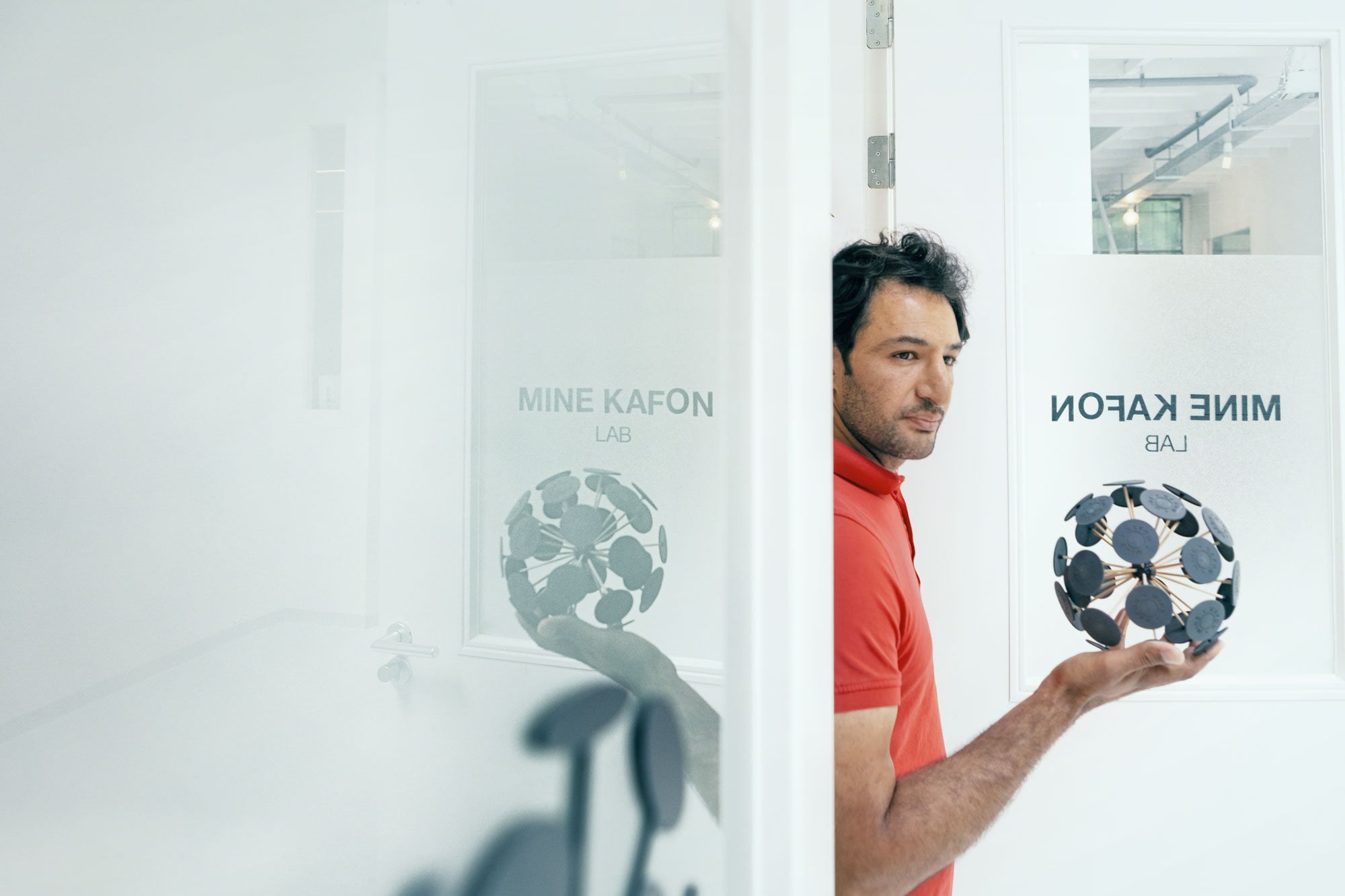
Odd one out
“I didn’t even graduate with a very high grade for the project,” Massoud says. “In my department at the academy we were trained to make tables and chairs; domestic goods. My work didn’t really fit in very well with that.” That was back in 2010. In the years afterwards, Massoud gave a number of lectures and presentations around the world about his design, as well as talking to government defence departments and demining organisations. The original idea turned out to be a great way to tell the story of landmines and raise awareness, Massoud explains, even if as a real-life solution, it wasn’t quite there. A decade on, and the project has taken flight – literally. Massoud has now developed a series of drones to tackle the landmine problem from the air.
“People have to walk into the minefields not knowing where it’s safe”
For Massoud, it was a natural progression. “I’ve always been fascinated by machines. Cars, tractors, engines, helicopters – anything that moves.” He and his team have developed a complete demining system from scratch consisting of three different drones plus the software. The first drone surveys entire stretches of land to create a 3D map of the terrain. Equipped with a magnetometer and ground-penetrating radar, the second drone can detect landmines as well as unexploded bombs to a depth of three metres, also pinpointing their position on the map. The last, and biggest drone, can destroy the mines. With its robotic gripping arm, it can place a military-grade detonator in a tripod over the landmine before flying off to activate it from a safe distance.
“Usually it’s all done by people on the ground; it’s very slow and dangerous. People have to walk into the minefields not knowing where it’s safe. With the drones, we can also share the data so people can see in advance where the mines are.” The detection process is at least 10 times faster and 40 times cheaper than current methods, Massoud estimates.
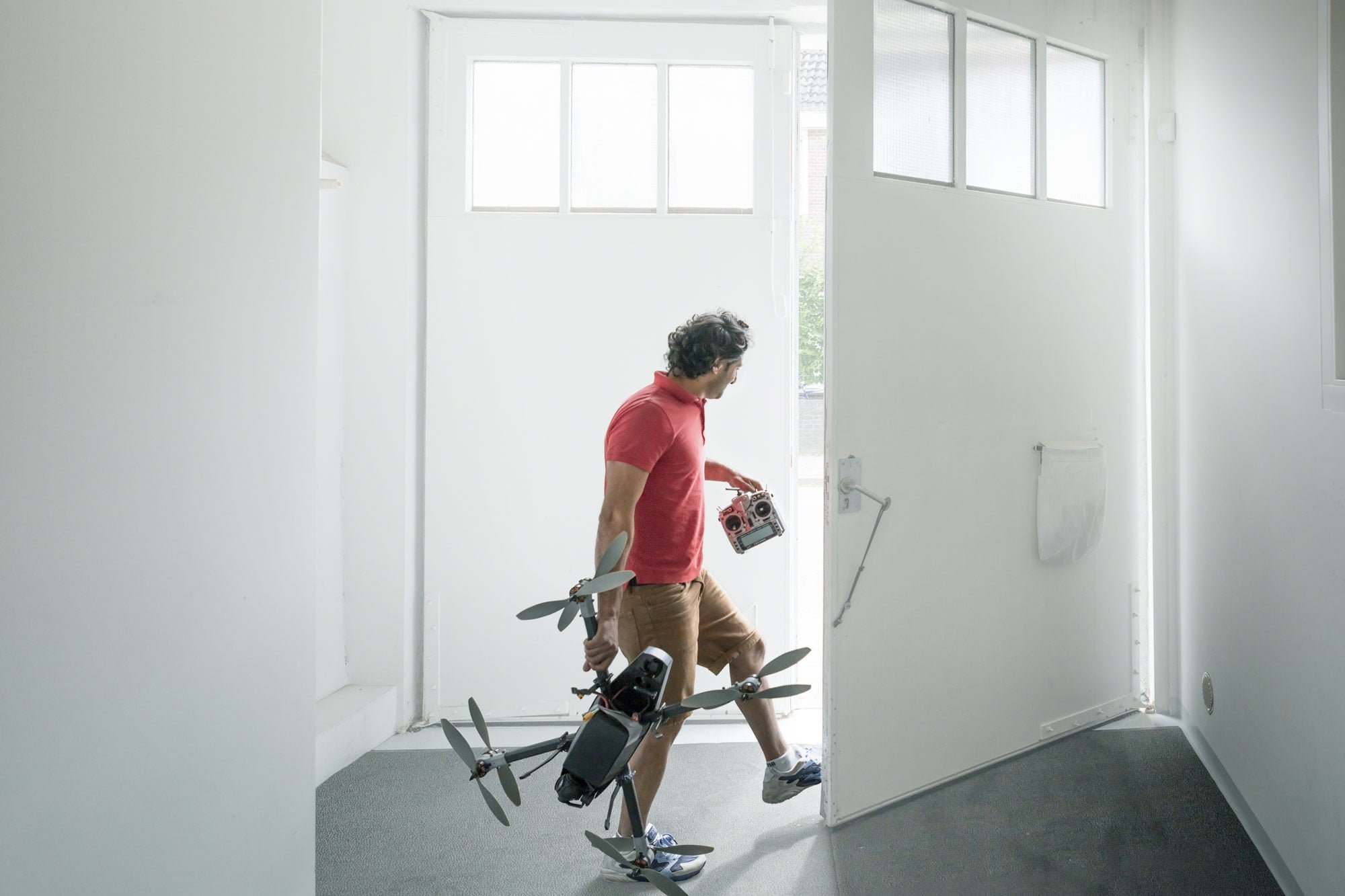
Ready for takeoff
Massoud’s brother Mahmud joined the team a few years ago and the two are very excited because finally, for the first time, and after extensive testing, their drones are about to be used in the field. “The finished drones are on their way to Mali right now,” Massoud says. The organisation is currently in talks with 50 companies and governments, from Iraq to South Korea. Qatar wants to donate the drones to countries that need them, and the team has just received official word from the Afghan government that their drones will be used to clear landmines in their home country, which is especially meaningful to them. “This was our dream. It’s why we’ve been working on this for so long – why we didn’t give up. For us it’s so important that our system is going to actually be used now. We invested the prime years of our lives in it because we believe in the project and we believe in solving the problem,” Massoud says. “I get a little emotional these days, talking about it. It hasn’t been easy.”
Does he ever wish that he’d just designed a chair instead? “Sometimes,” he smiles. “At a certain point you’re done and the chair works! We’ve had to overcome so many obstacles: crashing drones, sensors that don’t trace the right metals… We could have had another job, and perhaps been more successful but,” he shrugs.
The scale of the problem
Deteriorating over the years, landmines are time bombs, still killing and maiming victims decades after wars have moved elsewhere. Today an estimated 59 countries have problems related to landmine contamination. According to the Landmine Monitor, over 6,500 people lost limbs or lives in landmine explosions in 2018. Of these, some 70% are civilians and roughly half of those injured are children. In addition to the deaths and injuries, mines also make land unusable for growing food or accessing an area’s natural resources. In times of hardship people can be forced to choose between farming a minefield to feed their families or going hungry.

“The problem is so big that people had given up hope on being able to do something about it, thinking it was just one of those things that you have to learn to live with,” Massoud says. The brothers are set on proving otherwise. With the help of emerging new technology such as their drone system, they believe that it should soon be possible to make landmines history. “According to our calculations we think that the landmine problem can be solved within five to ten years. Worldwide,” Massoud says. “Especially now that other, bigger players are also on the way. We led the development, but the rest can follow on more quickly.”
Improvised explosive devices (IEDs) are another matter, however. These are devices made with whatever is on hand such as oil barrels, filled with explosives and buried, ready to go off. Although Massoud’s drones are able to detect them, new explosives are currently being placed everyday in places like Afghanistan, and IEDs are now causing more injuries than landmines.
Doesn’t Massoud despair at such developments? “You have countries like the US spending more on military budgets than on vaccines. Companies that earn billions from military products … these things will continue. You can’t solve everything.”
Indeed. But there are those who do what they can and those who don’t. And leaving this small studio with that thought in mind, how encouraging it is in this case that the world has one less chair designer.
